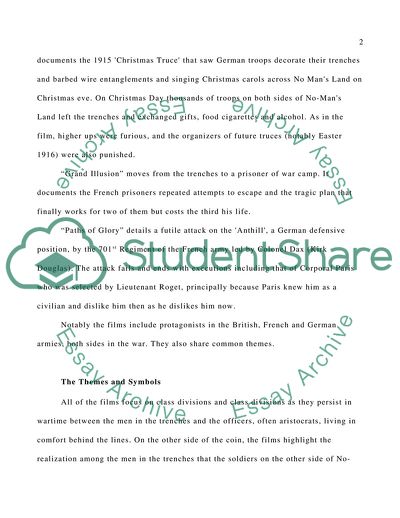Cite this document
(Films and the First World War Movie Review Example | Topics and Well Written Essays - 1750 words, n.d.)
Films and the First World War Movie Review Example | Topics and Well Written Essays - 1750 words. https://studentshare.org/visual-arts-film-studies/1746325-history-essay-comparing-and-contrasing-4-different-movies-all-quiet-on-the-western-front-joyeux-noel-grand-illusion-and-paths-of-gloryon-wwi
Films and the First World War Movie Review Example | Topics and Well Written Essays - 1750 words. https://studentshare.org/visual-arts-film-studies/1746325-history-essay-comparing-and-contrasing-4-different-movies-all-quiet-on-the-western-front-joyeux-noel-grand-illusion-and-paths-of-gloryon-wwi
(Films and the First World War Movie Review Example | Topics and Well Written Essays - 1750 Words)
Films and the First World War Movie Review Example | Topics and Well Written Essays - 1750 Words. https://studentshare.org/visual-arts-film-studies/1746325-history-essay-comparing-and-contrasing-4-different-movies-all-quiet-on-the-western-front-joyeux-noel-grand-illusion-and-paths-of-gloryon-wwi.
Films and the First World War Movie Review Example | Topics and Well Written Essays - 1750 Words. https://studentshare.org/visual-arts-film-studies/1746325-history-essay-comparing-and-contrasing-4-different-movies-all-quiet-on-the-western-front-joyeux-noel-grand-illusion-and-paths-of-gloryon-wwi.
“Films and the First World War Movie Review Example | Topics and Well Written Essays - 1750 Words”. https://studentshare.org/visual-arts-film-studies/1746325-history-essay-comparing-and-contrasing-4-different-movies-all-quiet-on-the-western-front-joyeux-noel-grand-illusion-and-paths-of-gloryon-wwi.


